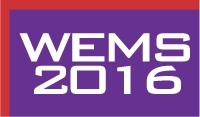Speaker
Description
Since the late 70s researchers at ISOLDE have been applying radioactive nuclear techniques to materials science and biophysics research. A considerable infrastructure has been built up on-site to allow scientists to perform experiments using short-lived isotopes [COR2012]. The production of radioactive isotopes online with big yields, elemental and isotopic purity allow the choice of the right probe radioactive element / isotope adequate to study each problem. In this context, Deep Level Transient Spectroscopy and Photoluminescence with radioactive Isotopes and nuclear techniques such as Perturbed Angular Correlations, Emission Channeling, ß-Nuclear Magnetic Resonance, Secondary Ion Mass Spectroscopy, Spreading Resistance Profiling and Mössbauer are very powerful to characterize new materials, particularly from an atomic point of view. ISOLDE is the world reference on production and delivery of radioactive beams of high purity dedicated to many different purposes for, e.g., atomic, nuclear, solid state, biophysics, and medical research. This laboratory is also a pioneer in the use of nuclear techniques – with an enriched potential due to the wide number of available radioactive probe elements – while studying the atomic scale interactions of the probe nuclei with its neighbourhood. Gamma-Gamma, Electron-Gamma and Beta-Gamma Perturbed Angular Correlation (GEBPAC) experiments appear in this concept to provide information about the hyperfine interactions between extranuclear electromagnetic fields and nuclear moments of a radioactive probe nucleus placed on a particular atomic site of the material. The precession frequency is determined from the observed modulations of PAC spectra and provides information about electric and magnetic fields generated by the electronic and ionic charge distribution in the neighborhood of the probe nuclei. This contribution explores the history of the PAC technique, isotopes and its application to new materials.
References
[ABR1953] A. Abragam and R. V. Pound. Physical Review 92, n. 4, 943 (1953).
[COR2012] J. G. Correia, K. Johnston and U. Wahl. Radiochim. Acta 100, 127 (2012).
[SCH1996] G. Schatz and A. Weidinger, Nucl. Cond. Matt. Phys., Wiley, Chichester (1996).
